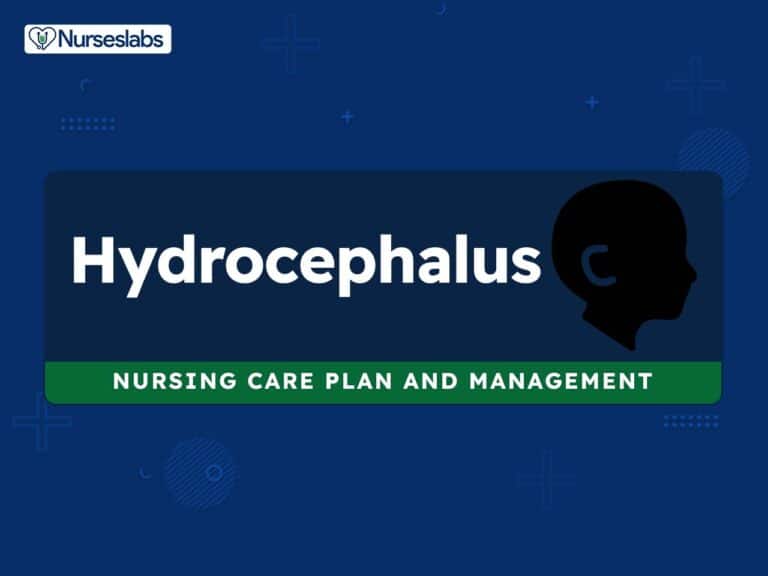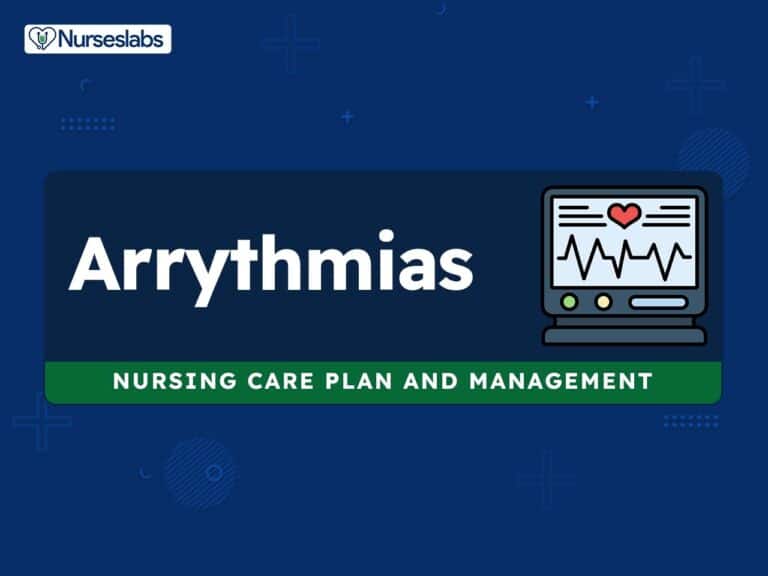Metabolic alkalosis is characterized by a high pH (loss of hydrogen ions) and high plasma bicarbonate caused by excessive intake of sodium bicarbonate, loss of gastric/intestinal acid, renal excretion of hydrogen and chloride, prolonged hypercalcemia, hypokalemia, and hyperaldosteronism. Compensatory mechanisms include slow, shallow respirations to increase CO2 level and an increase of bicarbonate excretion and hydrogen reabsorption by the kidneys.
What is Metabolic Alkalosis?
Metabolic alkalosis is characterized by an elevation in the pH of the blood and body fluids, primarily due to an excess accumulation of bicarbonate ions (HCO3-) in the extracellular fluid. This disturbance in the body’s acid-base balance is a result of various underlying physiological processes that lead to increased retention or influx of bicarbonate ions, causing the blood pH to shift towards the alkaline side of the pH scale (pH greater than 7.45).
Causes of Metabolic Alkalosis
Metabolic alkalosis can be caused by several mechanisms, including:
- Excessive Loss of Acid: This can occur due to prolonged vomiting, the use of certain diuretics (loop diuretics like furosemide), and excessive gastric suction. These conditions lead to a loss of hydrochloric acid (HCl) from the stomach or excessive loss of acidic substances, thereby raising the bicarbonate concentration relative to the available acid in the body.
- Excessive Ingestion of Bicarbonate: Consuming large amounts of alkaline substances, such as baking soda or antacids, can contribute to an increased intake of bicarbonate ions, overwhelming the body’s ability to regulate their concentration.
- Potassium Depletion: Severe potassium deficiency (hypokalemia) can lead to the movement of hydrogen ions (H+) out of cells in exchange for potassium ions (K+), resulting in an increased extracellular bicarbonate concentration.
- Renal Impairment: Certain renal conditions, such as primary hyperaldosteronism or Bartter syndrome, can lead to abnormal retention of bicarbonate ions in the kidneys, causing the accumulation of bicarbonate in the blood.
Symptoms of Metabolic Alkalosis
Common symptoms and clinical manifestations associated with metabolic alkalosis include:
- Nausea and Vomiting: This can be a result of the body’s attempt to compensate for the alkalosis by inducing gastric acid secretion.
- Muscle Weakness and Cramps: Alkalosis can affect the balance of electrolytes, including potassium and calcium, in the body. This can lead to muscle weakness, muscle cramps, and muscle twitching.
- Tremors and Shaking: This can occur as a result of altered electrolyte levels, particularly low levels of calcium and potassium.
- Altered Mental Status: In more severe cases of metabolic alkalosis, individuals might exhibit confusion, irritability, restlessness, or even altered consciousness. These changes in mental status can arise from electrolyte imbalances affecting neural signaling.
- Respiratory Changes: The body may attempt to compensate for metabolic alkalosis by reducing respiratory rate, a condition known as compensatory hypoventilation. This is the body’s effort to retain carbon dioxide (CO2), which can help normalize the pH by forming carbonic acid (H2CO3). This compensation can lead to shallow breathing and, in extreme cases, even respiratory distress.
- Cardiac Arrhythmias: Severe metabolic alkalosis, especially if accompanied by electrolyte imbalances like hypokalemia (low potassium levels), can disrupt the normal electrical activity of the heart, leading to irregular heartbeats or arrhythmias.
- Tetany: Low levels of ionized calcium in the blood due to alkalosis can lead to a condition called tetany. Tetany is characterized by sustained muscle contractions, muscle twitching, and numbness or tingling sensations, especially around the mouth and in the extremities.
- Paradoxical Aciduria: Metabolic alkalosis can cause the kidneys to excrete excess bicarbonate in the urine, leading to a condition where urine is acidic despite the alkalosis in the blood.
- Hypertension: In cases where metabolic alkalosis is caused by primary hyperaldosteronism, elevated levels of aldosterone can lead to sodium retention and increased blood volume, resulting in elevated blood pressure.
Nursing Care Plans and Management
Nursing care plans and management for metabolic alkalosis are integral aspects of patient care, especially in cases where individuals experience an imbalance in their body’s acid-base equilibrium.
Nursing Problem Priorities
- Electrolyte Imbalance and Monitoring: Metabolic alkalosis can lead to imbalances in electrolytes such as potassium, calcium, and sodium. Hypokalemia (low potassium levels) is particularly common. Monitoring and maintaining electrolyte levels within the normal range are essential to prevent complications like cardiac arrhythmias and muscle weakness.
- Improve Oxygenation: In metabolic alkalosis, compensatory hypoventilation can occur as the body tries to retain carbon dioxide. This can lead to respiratory distress, shallow breathing, and impaired gas exchange. Monitoring respiratory rate, depth, and oxygen saturation is crucial to ensure adequate oxygenation.
- Fluid and Acid-Base Balance: Maintaining fluid and acid-base balance is essential for overall homeostasis. Nurses need to monitor fluid intake and output, as well as administer intravenous fluids and medications as prescribed to correct the underlying alkalosis.
- Patient Education and Compliance: Educating the patient about the underlying causes of metabolic alkalosis, potential complications, and the importance of adhering to the treatment plan is vital. Patients should understand the significance of dietary changes, medication compliance, and follow-up appointments to prevent recurrence.
- Medication Administration and Monitoring: Administering medications as prescribed, such as potassium supplements or medications to treat the underlying cause, requires careful monitoring. Nurses should assess for potential adverse effects and evaluate the patient’s response to treatment.
- Safety and Fall Prevention: Muscle weakness, tremors, and altered mental status associated with metabolic alkalosis can increase the risk of falls and accidents. Implementing fall prevention strategies, such as assisting with mobility and providing a safe environment, is important to ensure patient safety.
- Nutritional Support and Education: Addressing dietary factors contributing to metabolic alkalosis, such as excessive intake of alkaline substances, is important. Nurses can provide dietary education and collaborate with dietitians to create a balanced nutrition plan that supports the patient’s needs.
- Psychosocial Support: Patients with metabolic alkalosis may experience anxiety, confusion, or irritability due to electrolyte imbalances and associated symptoms. Offering emotional support, reassurance, and opportunities for communication can help alleviate psychosocial distress.
- Monitoring Cardiovascular Status: While cardiac arrhythmias can occur with severe electrolyte imbalances, they are less common in metabolic alkalosis compared to acidosis. Regular cardiovascular assessment, including monitoring heart rate and rhythm, can help detect any abnormalities.
- Renal Function and Output: Monitoring renal function and urine output is important, especially in cases where the alkalosis is due to renal causes. Ensuring proper kidney function is essential for electrolyte and acid-base balance.
Nursing Assessment and Diagnostic Findings
Thorough nursing assessment and accurate diagnostic findings are important in effectively managing patients with metabolic alkalosis. By conducting comprehensive evaluations, healthcare professionals can identify the underlying causes, assess symptom severity, and tailor interventions to address acid-base imbalances.
- Assess patient’s health history: Assess for a history of conditions or factors that could lead to excessive loss of acid (vomiting, gastric suction), excessive bicarbonate intake, or potassium depletion.
- Evaluate for symptoms such as nausea, vomiting, muscle weakness, tremors, numbness, tingling, irritability, and altered mental status: These are indicative of metabolic alkalosis.
- Monitor for cardiac arrhythmias, irregular heart rhythms: The heart’s electrical activity is highly sensitive to changes in pH. Alkalosis alters the balance between positively and negatively charged ions in the extracellular fluid, affecting the heart’s excitability and potentially leading to abnormal rhythms.
- Monitor blood pressure: Alkalosis-induced changes in potassium levels can influence blood pressure. Hypokalemia, for instance, can lead to increased sensitivity to the effects of catecholamines (such as adrenaline), potentially resulting in higher blood pressure and cardiac stress.
- Assess muscle strength, presence of muscle cramps, and signs of tetany (muscle contractions): Metabolic alkalosis can disrupt neuromuscular function by lowering ionized calcium levels, leading to increased neuromuscular excitability, muscle twitching, spasms, and tetany. Altered pH levels and electrolyte imbalances can also affect nerve conduction, potentially causing muscle weakness and sensory disturbances.
- Arterial Blood Gas (ABG): ABG results will show an elevated blood pH (alkalosis) and potentially decreased levels of carbon dioxide (PaCO2) due to compensatory hypoventilation.
- Serum Bicarbonate Levels: Elevated serum bicarbonate levels (HCO3-) will be evident in blood tests, indicating the accumulation of bicarbonate ions in response to metabolic alkalosis.
- Potassium Levels: Blood tests may reveal low levels of potassium (hypokalemia), a common electrolyte imbalance associated with metabolic alkalosis.
- Calcium Levels: Assess serum calcium levels, as hypocalcemia (low calcium) can contribute to symptoms like muscle spasms and tetany.
- Electrocardiogram (ECG): ECG findings might indicate cardiac arrhythmias, such as prolonged QT interval or T wave changes, linked to electrolyte imbalances.
- Renal Function Tests: Assess kidney function through tests like serum creatinine and blood urea nitrogen (BUN) to identify any underlying renal causes of metabolic alkalosis.
Nursing Goals
Here are the nursing goals for patients experiencing metabolic alkalosis:
- The patient will verbalize an understanding of the causes, symptoms, and treatment plan for metabolic alkalosis.
- The patient’s potassium, calcium, and sodium levels will remain within the normal range as evidenced by laboratory results.
- The patient will exhibit normalized acid-base balance.
- The patient’s respiratory rate will be within the normal range (12-20 breaths per minute) and they will exhibit effective and comfortable breathing patterns.
- The patient will demonstrate normal cardiac rhythm on electrocardiogram (ECG) monitoring.
- The patient will follow a prescribed diet that includes appropriate amounts of potassium, calcium, and sodium.
- The patient will experience improved comfort and relief from nausea, vomiting, muscle weakness, and tremors.
- The patient and their family will verbalize an understanding of medication compliance, dietary modifications, and potential complications related to metabolic alkalosis.
Nursing Interventions and Actions
These are general interventions for patients with Metabolic Alkalosis.
1. Restoring Electrolyte Balance
Restoring electrolyte imbalance in patients with metabolic alkalosis is necessary to maintain the body’s acid-base equilibrium and ensure the proper function of cells, preventing potential complications. This correction helps normalize physiological processes and supports overall health.
Assess serum electrolyte levels, particularly potassium, and chloride, to track progress and adjust interventions as needed.
Monitoring electrolyte levels allows for early detection of imbalances and guides treatment adjustments to prevent complications like cardiac arrhythmias or muscle weakness.
Assess vital signs, including heart rate, blood pressure, and respiratory rate, to detect any signs of worsening alkalosis-related complications.
Helps identify potential cardiovascular and respiratory disturbances that may arise due to electrolyte imbalances associated with metabolic alkalosis.
Keep accurate records of fluid intake and output to closely monitor fluid and electrolyte balance.
Provides valuable information on the patient’s hydration status and helps guide appropriate interventions.
Provide intravenous fluids containing electrolytes such as potassium, chloride, and sodium to restore the electrolyte balance.
Intravenous fluids with balanced electrolyte composition help replenish depleted ions, supporting normal cellular function and maintaining acid-base equilibrium.
Offer oral rehydration solutions containing electrolytes to promote fluid and electrolyte restoration in less severe cases.
Oral rehydration can be effective for patients with mild electrolyte imbalances, helping to correct alkalosis and prevent further complications.
Collaborate with the healthcare team to review and potentially modify medications that could contribute to alkalosis, such as diuretics or antacids.
Certain medications can alter electrolyte levels and exacerbate alkalosis. Adjusting or discontinuing such medications can help restore the electrolyte balance.
2. Normalizing Acid-Base Balance
Normalizing acid-base balance in patients with metabolic alkalosis is needed to restore the equilibrium between hydrogen ions and bicarbonate ions, which allows for proper cellular function, enzyme activity, and oxygen transport.
Monitor electrolyte levels regularly
Frequent monitoring of electrolyte levels, especially bicarbonate and chloride ions, allows for timely assessment of the progress towards acid-base balance restoration and helps guide adjustments to interventions if necessary.
Maintain adequate hydration
Ensuring proper hydration supports renal function and aids in the excretion of excess bicarbonate ions, helping to normalize acid-base balance.
Offer oral acids (e.g., Citric Acid)
Oral acids can lower blood pH and help counteract metabolic alkalosis by encouraging renal excretion of bicarbonate ions, contributing to the restoration of acid-base equilibrium.
Administer Intravenous Normal Saline (NS)
Intravenous NS, which contains chloride ions, helps restore electrolyte balance by increasing chloride levels and promoting excretion of excess bicarbonate ions through the kidneys, thereby aiding in correcting metabolic alkalosis.
Administer medications like Acetazolamide
Acetazolamide is a carbonic anhydrase inhibitor that promotes renal excretion of bicarbonate ions, aiding in restoring acid-base balance by reducing excessive bicarbonate levels.
3. Improving Respiratory Function
In patients with metabolic alkalosis, the respiratory status may involve compensatory hypoventilation as the body attempts to counterbalance the elevated blood pH. This hypoventilation results in the retention of carbon dioxide, aiding in the formation of carbonic acid to offset the alkalosis, potentially leading to shallow breathing and alterations in blood gas values.
Monitor respiratory rate and depth
Frequent assessment of respiratory rate and depth helps identify any changes, enabling timely intervention to prevent excessive breathing and maintain acid-base balance.
Assess for shortness of breath
Some patients may experience feelings of breathlessness or shortness of breath due to the reduced effectiveness of breathing in eliminating excess carbon dioxide.
Encourage slow breathing
Encouraging slower and deeper breathing patterns helps prevent hyperventilation, allowing the body to retain more carbon dioxide and thereby promoting a balanced acid-base environment.
Elevate head of bed
Elevating the head of the bed to a semi-Fowler’s position can enhance lung expansion and facilitate better air exchange, promoting optimal respiratory function.
Ensure adequate hydration
Maintaining proper hydration supports overall lung function and helps prevent thickening of respiratory secretions, which could hinder effective breathing.
Provide oxygen therapy
Oxygen therapy helps alleviate hyperventilation-induced respiratory alkalosis by improving oxygen saturation and reducing the stimulus for excessive breathing.
Teach breathing techniques
Educating patients on controlled breathing techniques, such as pursed-lip breathing, can help slow down breathing rates, minimize carbon dioxide elimination, and counteract respiratory alkalosis.
Provide Anxiety Management
Addressing anxiety can help reduce hyperventilation triggered by emotional stress, ultimately contributing to improved respiratory status and acid-base balance.
Administer sedation if needed.
In cases of severe hyperventilation due to anxiety or distress, sedation can help calm the patient and reduce the respiratory rate, aiding in the restoration of acid-base equilibrium.
4. Promoting Nutritional Balance
Promoting nutritional balance for patients with metabolic alkalosis involves guiding dietary choices to avoid exacerbating the alkalotic state. Emphasizing a balanced intake of acid-forming and alkaline-forming foods helps maintain a more stable acid-base equilibrium and supports the body’s efforts to regulate pH levels.
Offer high-chloride foods such as salted foods and certain vegetables
Foods rich in chloride can help replenish chloride levels, contributing to acid-base balance and electrolyte restoration.
Encourage potassium-rich foods such as bananas, potatoes, and leafy greens.
Potassium-rich foods aid in correcting electrolyte imbalances by increasing serum potassium levels, thus supporting metabolic equilibrium.
Ensure adequate protein intake
Protein-rich foods provide essential amino acids that support cellular processes, aiding in overall recovery and acid-base balance.
Limit high-alkaline foods such as citrus fruits and certain vegetables (cauliflower, broccoli, cabbage, and Brussels sprouts)
Reducing the consumption of foods that contribute to alkalinity helps prevent the exacerbation of metabolic alkalosis.
Collaborate with a dietitian
Working with a dietitian ensures personalized nutritional plans that address the patient’s specific needs, helping to restore electrolyte balance and support overall health.
5. Preventing Complications
Complications that need to be prevented in patients with metabolic alkalosis include electrolyte imbalances, such as hypokalemia, which can lead to cardiac arrhythmias, as well as neuromuscular manifestations like muscle weakness, tremors, and tetany due to altered calcium ionization.
Provide seizures and safety precautions as indicated. Pad side rails, protect the airway, put the bed in a low position, and frequent observation.
Changes in mentation and CNS or neuromuscular hyperirritability may result in patient harm, especially if tetany or convulsions occur.
Implement fall prevention measures
Metabolic alkalosis-related muscle weakness can increase the risk of falls. Implementing measures such as bed alarms and assistance during ambulation helps prevent injuries.
Administer medications with caution
Certain medications can potentially worsen metabolic alkalosis by affecting acid-base balance. These medications include loop diuretics (e.g., furosemide), thiazide diuretics, and laxatives, which can lead to excessive loss of chloride and hydrogen ions, exacerbating the alkalotic state. Antacids containing bicarbonate and certain forms of corticosteroids can also contribute to or worsen metabolic alkalosis by increasing bicarbonate levels or affecting electrolyte balance.
Educate on signs of electrolyte imbalance
Educating patients about symptoms like weakness, numbness, or irregular heartbeats linked to electrolyte imbalances promotes early recognition and prompt reporting, preventing severe complications.
Implement skin integrity measures
Patients with muscle weakness are susceptible to pressure ulcers. Implementing measures like repositioning and skin assessment helps prevent skin breakdown and associated complications.
Ensure proper hydration
Maintaining adequate hydration supports kidney function in excreting excess bicarbonate ions, minimizing the risk of complications related to metabolic alkalosis.
6. Administering Medication and Providing Pharmacological Interventions
There are several medications used to correct metabolic alkalosis, each with its own mechanism of action. It’s important to note that the choice of medication depends on the underlying cause and severity of the alkalosis, as well as the patient’s medical condition.
Normal Saline (0.9% Sodium Chloride)
Normal saline contains sodium and chloride ions. The administration of normal saline can help restore chloride levels and promote the excretion of excess bicarbonate through the kidneys. The increased chloride levels assist in counteracting the alkalotic state.
Lactated Ringer’s Solution
Lactated Ringer’s solution contains multiple electrolytes, including sodium, chloride, potassium, and lactate. The balanced electrolyte composition helps restore both acid-base and electrolyte balance, as lactate is metabolized to bicarbonate in the liver, aiding in counteracting metabolic alkalosis.
HCl (Hydrochloric Acid) Infusion
In severe cases of metabolic alkalosis, where rapid correction is needed, a dilute hydrochloric acid solution can be infused intravenously under careful monitoring. This infusion helps lower blood pH and counteracts the alkalotic state.
Acetazolamide
Acetazolamide is a medication that inhibits carbonic anhydrase, an enzyme involved in the reabsorption of bicarbonate in the kidneys. By blocking this enzyme, acetazolamide promotes the excretion of bicarbonate in the urine, which helps counteract the excess bicarbonate levels responsible for metabolic alkalosis.
Ammonium Chloride
Ammonium chloride is metabolized in the liver to produce ammonium ions. These ions are excreted in the urine and promote the exchange of sodium and potassium ions for chloride and hydrogen ions in the distal tubules of the kidneys. This leads to increased reabsorption of chloride and hydrogen ions, helping to correct the alkalosis.
7. Initiating Health Teaching and Patient Education
Here are nursing interventions for providing health teachings to patients with metabolic alkalosis
Assess the patient’s knowledge level
Assessing the patient’s baseline understanding of metabolic alkalosis helps tailor the education to their needs, ensuring that information is clear and appropriate.
Explain acid-base balance
Educating patients about the body’s normal acid-base balance and how metabolic alkalosis disrupts this balance provides a foundational understanding for further discussions.
Use simple language
Using plain and simple language helps ensure that patients comprehend the information easily, increasing the likelihood of accurate understanding and adherence.
Demonstrate breathing techniques
Physically demonstrating and having the patient practice breathing techniques empowers them to manage hyperventilation-induced respiratory alkalosis.
Discuss alkaline substances to avoid
Educating patients about substances that can exacerbate metabolic alkalosis helps them make informed choices and prevent further imbalances.
Advice on the importance of maintaining hydration
Emphasizing the significance of staying hydrated supports kidney function and aids in the excretion of excess bicarbonate ions.
Highlight dietary choices
Explaining which foods are rich in chloride and potassium assists patients in making appropriate dietary selections to counteract the alkalotic state.
Provide written materials
Giving patients written materials, such as handouts or pamphlets, reinforces the education and allows for review at their own pace.
Encourage questions
Creating an open environment for questions and clarifications ensures that patients have a complete understanding and feel more confident in managing their condition.
Schedule follow-up
Scheduling follow-up appointments or phone calls ensures that patients can ask additional questions and receive ongoing support as needed.
Recommended Resources
Recommended nursing diagnosis and nursing care plan books and resources.
Disclosure: Included below are affiliate links from Amazon at no additional cost from you. We may earn a small commission from your purchase. For more information, check out our privacy policy.
Ackley and Ladwig’s Nursing Diagnosis Handbook: An Evidence-Based Guide to Planning Care
We love this book because of its evidence-based approach to nursing interventions. This care plan handbook uses an easy, three-step system to guide you through client assessment, nursing diagnosis, and care planning. Includes step-by-step instructions showing how to implement care and evaluate outcomes, and help you build skills in diagnostic reasoning and critical thinking.

Nursing Care Plans – Nursing Diagnosis & Intervention (10th Edition)
Includes over two hundred care plans that reflect the most recent evidence-based guidelines. New to this edition are ICNP diagnoses, care plans on LGBTQ health issues, and on electrolytes and acid-base balance.

Nurse’s Pocket Guide: Diagnoses, Prioritized Interventions, and Rationales
Quick-reference tool includes all you need to identify the correct diagnoses for efficient patient care planning. The sixteenth edition includes the most recent nursing diagnoses and interventions and an alphabetized listing of nursing diagnoses covering more than 400 disorders.

Nursing Diagnosis Manual: Planning, Individualizing, and Documenting Client Care
Identify interventions to plan, individualize, and document care for more than 800 diseases and disorders. Only in the Nursing Diagnosis Manual will you find for each diagnosis subjectively and objectively – sample clinical applications, prioritized action/interventions with rationales – a documentation section, and much more!

All-in-One Nursing Care Planning Resource – E-Book: Medical-Surgical, Pediatric, Maternity, and Psychiatric-Mental Health
Includes over 100 care plans for medical-surgical, maternity/OB, pediatrics, and psychiatric and mental health. Interprofessional “patient problems” focus familiarizes you with how to speak to patients.

See also
Other recommended site resources for this nursing care plan:
- Nursing Care Plans (NCP): Ultimate Guide and Database MUST READ!
Over 150+ nursing care plans for different diseases and conditions. Includes our easy-to-follow guide on how to create nursing care plans from scratch. - Nursing Diagnosis Guide and List: All You Need to Know to Master Diagnosing
Our comprehensive guide on how to create and write diagnostic labels. Includes detailed nursing care plan guides for common nursing diagnostic labels.
Other nursing care plans related to endocrine system and metabolism disorders:
- Acid-Base Balance
- Addison’s Disease | 3 Care Plans
- Cushing’s Disease | 6 Care Plans
- Diabetes Mellitus Type 1 (Juvenile Diabetes) | 4 Care Plans
- Diabetes Mellitus Type 2 | 20 Care Plans UPDATED!
- Diabetic Ketoacidosis (DKA) and Hyperglycemic Hyperosmolar Nonketotic Syndrome (HHNS) | 4 Care Plans
- Eating Disorders: Anorexia & Bulimia Nervosa | 7 Care Plans
- Fluid and Electrolyte Imbalances
- Gestational Diabetes Mellitus | 4 Care Plans
- Hyperthyroidism | 7 Care Plans
- Hypothyroidism | 3 Care Plans
- Obesity | 5 Care Plans
- Thyroidectomy | 5 Care Plans



































Leave a Comment